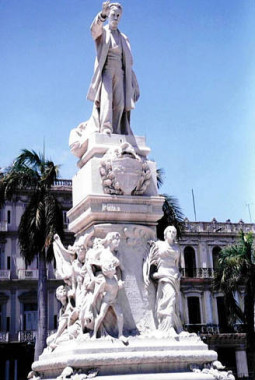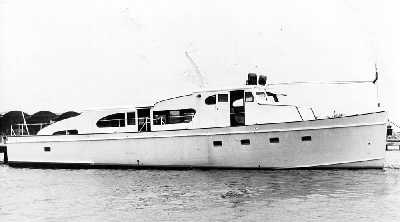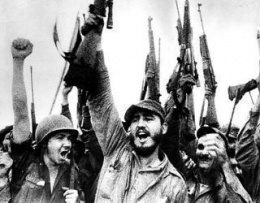Cuba was inhabited by aboriginal peoples, known as Indocubans. Their society subsisted peacefully from hunting, fishing and agriculture until the arrival of the first conquistador, Diego de Velázquez, in 1510, who landed with a small army at the southeast end of the Island, a place known today as Guantánamo. The Indocubans, normally a peaceful people, offered fierce resistance under a brave leader named Hatuey, for a period of approximately three months, until his capture by the invaders. Once conquered, the Indocubans were nearly exterminated by the harsh working conditions imposed by the Spaniards and by diseases brought to the Island by the new arrivals. To replace the dwindling indigenous labour force needed to work the gold mines, the cane fields and the tobacco plantations, the Spaniards started importing African slaves to the Island and soon slave trade became one of the most profitable activities.
Velázquez established seven garrison towns along the Island: Baracoa, Santiago, Bayamo, Camagüey, Sancti Spíritus, Trinidad and Batabanó. Because of the Islands location it became “the Key to the Gulf” and the stopping-off point for the Spanish conquistadors going to or returning from Central and South America. Batabanó briefly became the principal stopping-off point for the Spanish Fleet until Havana, a better natural harbor, was discovered due north of Batabanó. Havana then became a flourishing trading post as increasing numbers of ships, on their way to Europe, stopped to take supplies for the journey as well as goods to trade with the Europeans.
Havana was occupied by the British during the Colonial Wars when the British confronted France and Spain and took over France’s territories in Canada and the Island of Guadaloupe. Havana fell to the British on August 12, 1762, following a fierce, but unsuccessful, two-month resistance by the peasant population of Guanabacoa and Havana under the leadership of José Antonio Gómez better known in Cuban history as the national hero Pepe Antonio. Spain, realizing the strategic importance of Cuba recovered Havana from the British a year later in exchange for other of its major colonial territories. In the late 1700s Spain’s grip on the economies of its American colonies started to relax and trade was allowed between Cuba and the United States. US trade with the Island really took-off following its independence in 1776. To satisfy the growing demand for sugar in the US during the 1800s Cuban plantations were expanded and the number of African slaves brought to the Island vastly increased. The new wealth created by sugar on the Island gave rise to a local aristocracy, locally known as “the Cuban sacarocracy” that became increasingly at odds with the decisions of the Spanish central government. Discontent with Spanish domination extended from the aristocracy to other sectors of the population including the peasants and the African slaves and was manifested in different ways in the ensuing years. Of the various independence movements that were brewing all over Cuba, the first one of any importance erupted on October 10, 1868, at the sugar plantation “La Demajagua,” near Manzanillo, in Eastern Cuba, when plantation owner, Carlos Manuel de Céspedes, considered the father of the nation, freed his slaves and, with the revolutionary cry of “Independence or Death”, became the leader of a rebellion against Spain that would last until 1878 and would cost the lives of 250,000 Cuban rebels and 80,000 Spanish soldiers.

The first Cubans to make real headway in the quest for independence were José Martí, Antonio Maceo and Máximo Gómez, all of them popular leaders, who succeeded in mobilizing peasants and extending the rebellion across the Island. Martí was a journalist, poet and philosopher and is regarded by Cubans as the apostle and national hero of independent Cuba.
In 1892, Martí and a group of Cuban exiles in Miami founded the Cuban Revolutionary Party and in 1895 a new uprising against Spain was underway. Although Martí was killed in the early stages of the fighting, Máximo Gómez, Antonio Maceo and other revolutionary leaders continued the fight against the Spanish.
The fate of Spain, ironically, was sealed by the United States’ decision to intervene in the war following the mysterious explosion on August 15, 1898, of the warship Maine, sent to Havana Bay by the US government to “protect US citizens living in the city”. With the US intervention, the Cuban Revolutionary War became the year-long Spanish-Cuban-North American War, fought mainly on Cuban soil. By the end of the year the Spanish were defeated and the US forces established a military occupation government which would last until May 1902. Although the US forces withdrew from Cuba, the Americans retained almost total control over the Island and, under the Platt Amendment, kept the “right to intervene” in the Island’s affairs “to preserve its independence”. During its occupation of Cuba, the US established a naval base at Guantánamo which they occupy to this day. On May 20, 1902, following the end of US military occupation, Cuba became a semi-independent Republic with US-sponsored candidate Tomás Estrada Palma serving as its first president. The young country, with little experience in self-government, politically unsophisticated and with weak public institutions was plagued by corrupt governments which, combined with a growing economic dependence on the United States, resulted in many years of political turmoil and neglect of some sectors of the population and the steady deterioration of social conditions for many Cubans.
In 1925, after several ineffectual presidents, Gerardo Machado took power and established a harsh dictatorial regime that would last for 8 years until the deteriorating economy provided the opportunity for his overthrow, on August 12, 1933, by the same military establishment and US-based interests that had supported him in the past. One of the engineers of the overthrow of Machado was Fulgencio Batista who, with US backing, governed Cuba until 1944. Batista again seized power in another coup in 1952, and quickly established another regime. In reaction to Batista’s oppression, new revolutionary movements started to spring across the Island. These were formed by students, labor organizations, intellectuals, the middle-class, farmers and peasants.
On July 26, 1953, a group of some 150 young revolutionaries, lead by Fidel Castro, launched an attack on the Moncada Barracks, in the eastern city of Santiago de Cuba. The rebels were defeated by Batista’s troops and Castro and the other captured survivors were tried and imprisoned. The daring act of Castro and his followers captured the people’s imagination and the failed July 26 Moncada assault became the rallying cry against Batista and the beginning of a wider political movement that would come to be known as the Movimiento 26 de Julio. Increasing admiration for Castro and his fighters soon translated into popular pressure that forced Batista to release the political prisoners, who left for México into exile in May 1955.

México brought together Castro and a young Argentinean physician, Ernesto “Che” Guevara. Guevara joined the revolutionary group organized by Fidel Castro and together they planned a return to Cuba. With a group of 82 guerrillas they sailed from México in a cabin cruiser, the Granma, and landed in the southeast coast of Cuba on December 2, 1956. In their first encounters with Batista’s troops Castro’s fighters were reduced to a handful of men that took refuge in the Sierra Maestra mountains where they regrouped, reorganized and launched guerrilla attacks that soon gained support from peasants in the countryside and urban clandestine groups in the cities. The fight against Batista, coordinated by the Movimiento 26 de Julio, gained the support of the March 13 Students Movement, the Popular Socialist Party and other political and labor groups that together, after three years of growing and successful rebellion, forced Batista to give up power on January 1, 1959. Batista and his collaborators went into exile leaving behind an impoverished economy and population.
Castro came to power with huge popular support and formed a government that immediately set out to confront the problems it had inherited an economy near collapse. Soon after assuming power, the new government decided to expand its diplomatic relations to other countries, including those of the Soviet bloc, and introduced two pieces of popular legislation, the Urban Reform Law, through which large rental properties not occupied by “absentee landlords” were confiscated and sold to the tenants, and the Agrarian Reform Law of 1959, a piece of legislation that would re-distribute the huge tracts of land owned mostly by Americans and by a few Cubans. American displeasure with these measures was clear and the reaction of the US government was swift. Sugar purchases from Cuba were stopped and were accompanied by other actions aimed to undermine the Revolutionary government’s programs. In response, Cuba nationalized American-owned industries, mostly sugar mills. When the US petroleum companies threatened to cut-off oil supplies and paralyze the country, Cuba started purchasing oil from the Soviet Union which the US-owned refineries refused to process. This resulted in the nationalization of the oil companies.
As the US increased pressure on Cuba, the government of the Revolution sought, and found, new allies in the Soviet Union. By 1960 the USSR had became the main purchaser of Cuban sugar and its most important supplier of petroleum products.

Other actions of the Cuban government during 1960, namely the nationalization of industry, commerce and banking and the Havana Declaration of September 2, resulted in the US decision to remove its diplomats from Havana, sever diplomatic relations with the Castro regime and begin an “economic embargo,” which in practice was a “blockade” of the Island. In practical terms, all commercial exchanges between the two countries had now come to an end. At the same time the US launched a series of overt and covert actions to undermine the new Cuban government, these included supporting insurgents in the Escambray region, influencing the Organization of American States to marginalize Cuba from the political and economic scene of the hemisphere, and the training and backing of the ill-fated April 17, 1961, CIA-led Bay of Pigs (Playa Girón) invasion of the Island by 1,400 anti-Castro Cubans, who were crushed by Castro’s forces in what Cuban’s consider the greatest defeat of US imperialism. The more the US pushed, the closer Cuba’s ties with the Soviet Union became. Taking advantage of Cuba’s fear of further US armed aggression against the Island, the Soviets persuaded the Cuba into closer economic and political links including military and defense arrangements which rapidly lead to the October 1962, Soviet-US confrontation over the deployment of Soviet missiles on Cuban territory.
As Cuba faced the structural changes required by the realignment of its commercial relations, it also embarked into a series of ambitious social programs in benefit of the less advantaged sectors of the population. During the 60s a massive program to eradicate illiteracy was launched and established, greater resources were devoted to the improvement of education and health facilities, there were massive programs to increase the availability of housing and increased economic resources were directed to the development of the rural areas. The early 60s also witnessed the creation of several organizations and institutions, such as the Federation of Cuban Women (FMC), the Committees for the Defense of the Revolution (CDR), the Union of Cuban Pioneers (UPC) and the Union of Cuban Youth (UJC), geared in part to help Cuba withstand the constant US pressure, deal with the anti-Castro insurgents within Cuba and deepen the roots of the Revolution among its people and throughout the country. The early 1960s also saw the passing of the second Agrarian Reform (1963) which affected medium and small landholdings, the introduction of agricultural development plans centered on state-owned farms and cooperatives, the proliferation of small workers brigades devoted to development work in agriculture, literacy, construction of school, and the launching of an ambitious plan to increase sugar production to 10 million tons in order to boost the Island’s income and its ability to acquire petroleum products and and consumer goods from the Soviet Union and Eastern Europe. The 10-million ton goal for sugar production was never achieved and the efforts to reach it may have even caused adverse dislocations in the Cuban economy.
Isolated by most western countries, with the notable exception of Canada and México, in the early 1970s, the government’s development programs shifted towards a political and economic institutionalization under increasing influence of the Soviet economic model, this resulted in Cuba’s overdependence on the Soviet Union and proved to have worked against the long-term interests of the Cuban economy. By 1982, the Cuban government decided to modify its economic model and started to distance itself from the Soviet model. At about that time, legislation was passed establishing the conditions under which foreign and Cuban enterprises could jointly operate in Cuban territory. Also, in 1982, the Cuban government started to invest heavily in biotechnology and other high-technology areas such as pharmaceuticals, computers, computerized medical equipment and software. In the ensuing years, the development of tourism facilities was also started, catering first to Eastern European and Soviet sun-seekers, and later to Western Europeans, Canadians and Latin Americans.


